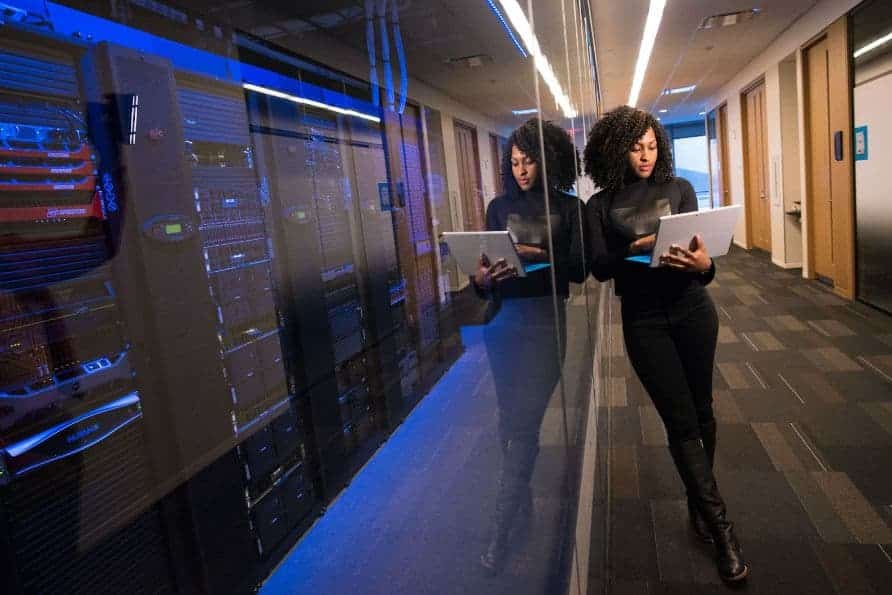October 26, 2023



The rapid evolution of the decentralized finance (DeFi) landscape continues to be underscored by a burgeoning reality, one that is marked by an immense amount of innovation and adaptability. Financially speaking, the total volume of assets locked up within this sector has risen from a little under $1 billion in 2019 to over $100 billion just two years later. However, despite this meteoric rise, the sector faces several challenges.
For starters, the DeFi industry is plagued by issues of infrastructure vulnerabilities, growing cases of fraud, and smart contract vulnerabilities. Moreover, the scalability dilemma is another significant hurdle that needs to be addressed. Lastly, the technical nature of most DeFi platforms has resulted in user experience obstacles, making many applications daunting to use for the average user.
Revamping DeFi, one step at a time
In the face of these changes, solutions like Agoric have cemented a niche for themselves, providing users with a high degree of digital innovation and adaptability, thereby making the industry more accessible to everyone.
While many of Agoric’s contemporaries continue to grapple with the complexities associated with smart contract development, the project’s dev team has taken a unique path forward, primarily by leveraging the ubiquity and familiarity of JavaScript to create a ‘Hardened JavaScript’ smart contract ecosystem. This approach has helped open the door for a vast army of global JavaScript developers to deploy sophisticated decentralized applications (Dapps), non-fungible tokens (NFTs), and intricate DeFi markets with ease.
Moreover, by focusing on “offer safety” and composability, Agoric ensures that its contracts are not just secure but also fair, setting a new benchmark for trust within the DeFi sector. Lastly, as a part of the border blockchain community, Agoric’s contributions are not limited to its own platform but extend to enriching the broader Cosmos ecosystem as well, allowing users to harness the latter’s capabilities.
Despite its innovative solution, Agoric hasn’t been resting on its laurels. The platform recently achieved one of its major Mainnet milestones, news of which was closely followed by the introduction of several applications, including Crabble NFT Lending, KREAD Dynamic NFT Builder, and Calypso Interchain Trading Terminal.
The Power of $BLD, Explained
As part of the Agoric ecosystem, its native token, $BLD, is the lifeblood that fuels the platform’s security, governance, and incentive mechanisms. To elaborate, Agoric addresses its security issues by implementing a robust staking model. $BLD holders can stake their tokens with validators to ensure the chain’s ongoing operational integrity. Each transaction on the Agoric blockchain must be executed and confirmed by a set of independent validators, serving as a form of collateral that incentivizes correct execution and penalizes misbehavior.
Additionally, $BLD holders can actively participate in various on-chain governance processes, deciding everything from protocol upgrades to economic parameters. This democratic approach ensures that the community has a say in the network’s evolution, fostering a sense of ownership and engagement among its members.
$BLD also serves as an incentive mechanism within the Agoric ecosystem, allowing stakers to borrow IST (Agoric’s stable token, which has been described in detail below) against their future staking rewards, providing liquidity while maintaining chain security.
While the technical strengths of the $BLD token in security and governance are evident, astute crypto enthusiasts often look beyond the immediate functionalities. As the sector continues its evolution, having a role in Agoric’s journey might just be a strategic move for those who truly believe in the Web3 vision.
A Glimpse into Agoric’s Broader Ecosystem
Agoric’s Mainnet 2, also known as the Bulldozer release, is a significant breakthrough that brings a host of new features and improvements to the ecosystem, including the Dynamic IBC module, which is designed for seamless interoperability between various blockchain networks.
Moreover, the upgrade sets the stage for a wide range of decentralized applications such as the Inter Protocol, a decentralized finance platform featuring an over-collateralized, risk-managed stable token known as IST. Designed to be IBC-native, IST is not only the native fee token for the Agoric chain but also holds significance for the entire Cosmos ecosystem.
The token is backed by a higher amount of collateral to account for the volatility of crypto assets, providing a stable, reliable token for use across the interchain ecosystem. Governed by an economic committee and backed by a Reserve fund of diversified cryptocurrencies, IST aims to maintain parity with the US dollar.
It bears mentioning that the Inter Protocol comes laden with features like ‘Vaults’ for depositing collateral and a ‘Parity Stability’ module for low-fee trades between IST and other high-quality, stable tokens.
Looking ahead
As more and more people continue to gravitate toward the use of decentralized technologies, platforms like Agoric seem to be leading the roost and steering the course of the Web3 industry toward a more secure, scalable, and user-friendly future. For instance, its programming model offers the potential for a cryptoeconomic standard library, which could be as transformative as Node.js and React.js were for JavaScript.
Similarly, its contribution to the blockchain sector — the Cosmos network, in particular — has been noteworthy, especially its focus on mitigating the inherent risks posed by Proof of Stake (PoS) consensus mechanisms and their role within DeFi. Therefore, it remains to be seen how the DeFi landscape continues to evolve and grow, especially in the face of these burgeoning innovations.
Disclaimer
Any data, text, or other content on this page is provided as general market information and not as investment advice. Past performance is not necessarily an indicator of future results.
![]()
![]()
The Trust Project is a worldwide group of news organizations working to establish transparency standards.
Damir is the team leader, product manager, and editor at Metaverse Post, covering topics such as AI/ML, AGI, LLMs, Metaverse, and Web3-related fields. His articles attract a massive audience of over a million users every month. He appears to be an expert with 10 years of experience in SEO and digital marketing. Damir has been mentioned in Mashable, Wired, Cointelegraph, The New Yorker, Inside.com, Entrepreneur, BeInCrypto, and other publications. He travels between the UAE, Turkey, Russia, and the CIS as a digital nomad. Damir earned a bachelor’s degree in physics, which he believes has given him the critical thinking skills needed to be successful in the ever-changing landscape of the internet.

Damir is the team leader, product manager, and editor at Metaverse Post, covering topics such as AI/ML, AGI, LLMs, Metaverse, and Web3-related fields. His articles attract a massive audience of over a million users every month. He appears to be an expert with 10 years of experience in SEO and digital marketing. Damir has been mentioned in Mashable, Wired, Cointelegraph, The New Yorker, Inside.com, Entrepreneur, BeInCrypto, and other publications. He travels between the UAE, Turkey, Russia, and the CIS as a digital nomad. Damir earned a bachelor’s degree in physics, which he believes has given him the critical thinking skills needed to be successful in the ever-changing landscape of the internet.
Read More: mpost.io









 Bitcoin
Bitcoin  Ethereum
Ethereum  Tether
Tether  XRP
XRP  Solana
Solana  USDC
USDC  Dogecoin
Dogecoin  TRON
TRON  Cardano
Cardano  Lido Staked Ether
Lido Staked Ether  Wrapped Bitcoin
Wrapped Bitcoin  Sui
Sui  Hyperliquid
Hyperliquid  Wrapped stETH
Wrapped stETH  Chainlink
Chainlink  Avalanche
Avalanche  Stellar
Stellar  Bitcoin Cash
Bitcoin Cash  Toncoin
Toncoin  LEO Token
LEO Token  Shiba Inu
Shiba Inu  USDS
USDS  Hedera
Hedera  Monero
Monero  WETH
WETH  Litecoin
Litecoin  Wrapped eETH
Wrapped eETH  Polkadot
Polkadot  Binance Bridged USDT (BNB Smart Chain)
Binance Bridged USDT (BNB Smart Chain)  Bitget Token
Bitget Token  Ethena USDe
Ethena USDe  Pepe
Pepe  Pi Network
Pi Network  WhiteBIT Coin
WhiteBIT Coin  Coinbase Wrapped BTC
Coinbase Wrapped BTC  Dai
Dai  Aave
Aave  Uniswap
Uniswap  Bittensor
Bittensor  Ethena Staked USDe
Ethena Staked USDe  Cronos
Cronos  Aptos
Aptos  OKB
OKB  NEAR Protocol
NEAR Protocol  BlackRock USD Institutional Digital Liquidity Fund
BlackRock USD Institutional Digital Liquidity Fund  Jito Staked SOL
Jito Staked SOL  Ondo
Ondo  Internet Computer
Internet Computer  Ethereum Classic
Ethereum Classic